This article was co-authored by Joanna Kula and by wikiHow staff writer, Jennifer Mueller, JD. Joanna Kula is a Licensed Esthetician, Owner and Founder of Skin Devotee Facial Studio in Philadelphia. With over 10 years of experience in skincare, Joanna specializes in transformative facial treatments to help clients achieve a lifetime of healthy, beautiful, and radiant skin. She is also a contributing author for the prestigious Les Nouvelles Esthetiques & Spa magazine and has been featured in a number of magazines including InStyle.
There are 13 references cited in this article, which can be found at the bottom of the page.
This article has been viewed 68,865 times.
If you're struggling with acne, you know how frustrating this problem can be. Coconut oil is a favorite beauty multitasker with tons of benefits—some even claim it can help acne. But can it? Yes and no. There are fatty acids in coconut oil that studies have shown kill at least one type of bacteria that causes acne.[1] But at the same time, if you have oily skin, coconut oil can clog your pores and make your problems worse. Read on to learn everything you need to know about whether coconut oil might work for you and how to incorporate it into your skincare regimen.
Things You Should Know
- Use coconut oil to remove acne-causing bacteria if you have very dry skin. However, it can clog your pores, so it's not the best option if you have acne.
- Massage coconut oil into your skin to help clean and remove makeup and bacteria. Then, wipe it off with a warm, wet cloth and wash your face with a gentle cleanser.
- Try non-comedogenic oils, such as sunflower seed oil or argan oil, instead of coconut oil to moisturize.
- Keep using whatever products you already use for acne control even if you're using coconut oil.
Steps
Using Coconut Oil to Treat Acne
-
1Use only unrefined cold-pressed virgin coconut oil. Unrefined coconut oil is pure, without additives or fragrances that could further irritate your skin. And cold-pressed oil is removed from the coconut plant without the use of heat, which preserves more of the oil's nutrients.[5]
- Store your coconut oil in a sealed container in a cold, dark place or in the refrigerator to maintain peak freshness.[6]
-
2Check your skin's sensitivity by doing a patch test.[7] Allergic reactions to coconut oil are rare, but it's better to be safe. Massage a dab of coconut oil into an inconspicuous part of your skin where it won't be rubbed off easily, such as the inside of your elbow. Continue to reapply the oil to the same spot twice a day for 10 days.[8]
- Stop the test as soon as you have a skin reaction, such as red, swollen, or itchy skin. This means you're better off not using coconut oil on your skin at all.
- If you never have any reaction, feel free to use coconut oil on your face.
-
3Rub a dime-sized amount of coconut oil between clean fingers. Wash your hands, then rub the coconut oil to liquefy it so that it's easier to apply to your skin. While it's possible to heat the oil up in the microwave, doing it this way ensures it'll never be too hot for your skin.[9]
-
4Massage the oil into your skin gently using a light, circular motion. Start at your forehead and work down your face and neck, giving yourself a gentle massage as you go. Concentrate on areas that are the driest.[10]
- Rub a little coconut oil on a cotton pad and wipe to quickly and easily remove makeup. This ensures your skin is as clean as possible.[11]
-
5Wipe the oil off of your face with a washcloth after 30 seconds. Wet the washcloth with extremely warm water—maybe a little steamy, but not hot enough to burn you. Rub gently to wipe the oil off of your face. You might also leave the warm washcloth sitting on your face for a few seconds to let the steam open up your pores.[12]
- Since coconut oil absorbs into the skin relatively quickly, this is likely all you'll need to do! But if your skin feels greasy, follow up with a gentle cleanser.
-
6Follow up with a gentle facial cleanser. Coconut oil absorbs into the skin relatively quickly, so your skin should feel fine. But there's a chance your skin might feel a bit greasy. A gentle facial cleanser just helps you make sure that all of the coconut oil is off your face.[13]
- Since you've already washed your face with coconut oil, this is technically referred to as "double-cleansing."
-
7Try an overnight coconut oil treatment if you have extremely dry skin. Wash your face first, as you normally would. Rub a dime-sized amount of coconut oil between your fingers to warm it up, then massage it into your face. That's it![14]
- In the morning, wash your face as soon as you get out of bed. From there, you can continue your usual morning routine.
- You're going to get oil on your pillowcase—take it off and wash it before you sleep on it again.
Expert Q&A
-
QuestionCan coconut oil make your acne worse?
 Joanna KulaJoanna Kula is a Licensed Esthetician, Owner and Founder of Skin Devotee Facial Studio in Philadelphia. With over 10 years of experience in skincare, Joanna specializes in transformative facial treatments to help clients achieve a lifetime of healthy, beautiful, and radiant skin. She is also a contributing author for the prestigious Les Nouvelles Esthetiques & Spa magazine and has been featured in a number of magazines including InStyle.
Joanna KulaJoanna Kula is a Licensed Esthetician, Owner and Founder of Skin Devotee Facial Studio in Philadelphia. With over 10 years of experience in skincare, Joanna specializes in transformative facial treatments to help clients achieve a lifetime of healthy, beautiful, and radiant skin. She is also a contributing author for the prestigious Les Nouvelles Esthetiques & Spa magazine and has been featured in a number of magazines including InStyle.
Licensed Esthetician Coconut oil has the potential to contribute to acne and breakouts as it is highly comedogenic. It can also be difficult to remove and may leave behind a residue on your skin.
Coconut oil has the potential to contribute to acne and breakouts as it is highly comedogenic. It can also be difficult to remove and may leave behind a residue on your skin.
Warnings
- Talk to a doctor or dermatologist if your skin has a bad reaction to the coconut oil or if your acne continues to get worse over time.[26]⧼thumbs_response⧽
References
- ↑ https://pubmed.ncbi.nlm.nih.gov/19665786/
- ↑ https://pubmed.ncbi.nlm.nih.gov/19665786/
- ↑ https://www.ncbi.nlm.nih.gov/pmc/articles/PMC6335493/
- ↑ https://labmuffin.com/fact-check-how-to-use-comedogenicity-ratings/
- ↑ https://www.eatingwell.com/article/7923262/coconut-oil-for-skin/
- ↑ https://www.hsph.harvard.edu/nutritionsource/food-features/coconut-oil/
- ↑ Joanna Kula. Skincare Specialist. Expert Interview.9 July 2019.
- ↑ https://www.aad.org/public/everyday-care/skin-care-secrets/prevent-skin-problems/test-skin-care-products
- ↑ https://www.goodhousekeeping.com/beauty/anti-aging/a40753941/coconut-oil-for-skin/
- ↑ https://www.goodhousekeeping.com/beauty/anti-aging/a40753941/coconut-oil-for-skin/
- ↑ https://www.self.com/story/coconut-oil-beauty-hacks
- ↑ https://coconutsandkettlebells.com/how-to-clean-your-face-with-coconut-oil/
- ↑ https://coconutsandkettlebells.com/how-to-clean-your-face-with-coconut-oil/
- ↑ https://www.health.com/beauty/i-replaced-my-night-cream-with-coconut-oil-and-these-are-my-results
- ↑ https://pubmed.ncbi.nlm.nih.gov/19134433/
- ↑ https://pubmed.ncbi.nlm.nih.gov/24320105/
- ↑ https://www.ncbi.nlm.nih.gov/pmc/articles/PMC6335493/
- ↑ https://pubmed.ncbi.nlm.nih.gov/24320105/
- ↑ Joanna Kula. Skincare Specialist. Expert Interview.9 July 2019.
- ↑ https://labmuffin.com/fact-check-how-to-use-comedogenicity-ratings/
- ↑ https://www.goodhousekeeping.com/beauty/anti-aging/a40753941/coconut-oil-for-skin/
- ↑ Joanna Kula. Skincare Specialist. Expert Interview.9 July 2019.
- ↑ https://labmuffin.com/fact-check-how-to-use-comedogenicity-ratings/
- ↑ https://labmuffin.com/fact-check-how-to-use-comedogenicity-ratings/
- ↑ https://www.self.com/story/coconut-oil-beauty-hacks
- ↑ Joanna Kula. Skincare Specialist. Expert Interview.9 July 2019.
About This Article
If you want to use coconut oil to treat your acne, first check that it won’t irritate your skin by massaging a small amount of it into the inside of your arm and seeing that you don’t get a reaction. When you’re ready to use coconut oil, steam your face over a bowl of hot water to open up your pores. After you’ve done this for 3 to 4 minutes, soften 1 teaspoon of coconut oil in your palms and then gently massage it into your face for 2 to 3 minutes. When you’re done, wipe it away with a facecloth and hot water and then wash your face with a mild cleanser. Follow this routine every morning and night, and if you see that your skin is improving, continue using coconut oil. For more advice, including how to determine if coconut oil is right for your skin type, read on!
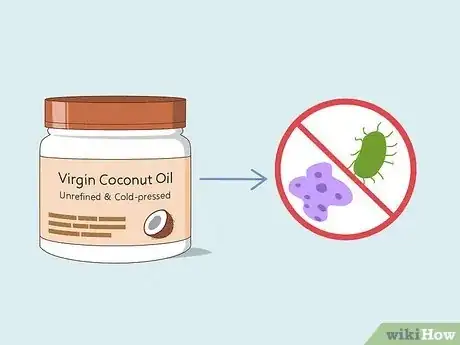

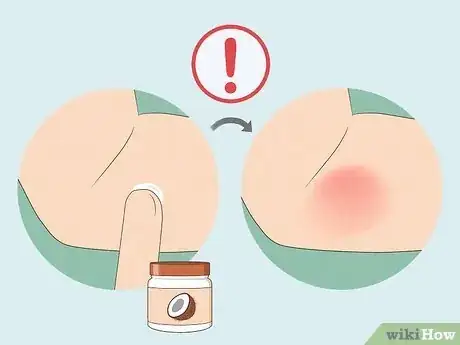


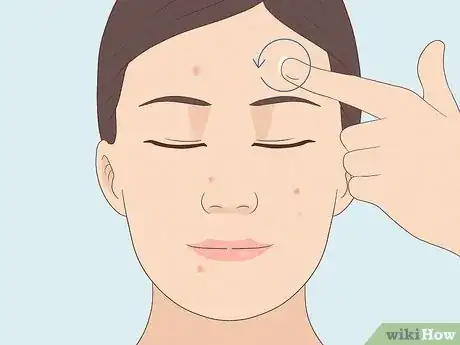

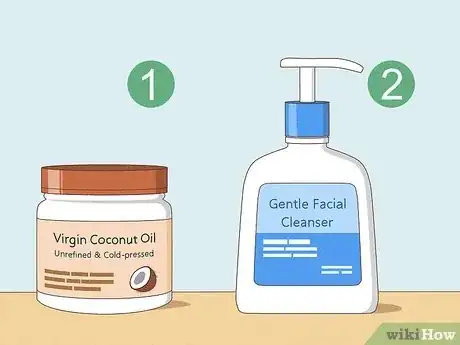
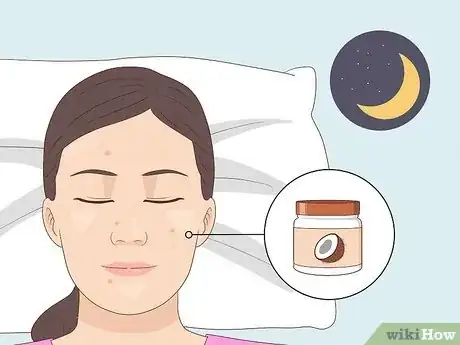
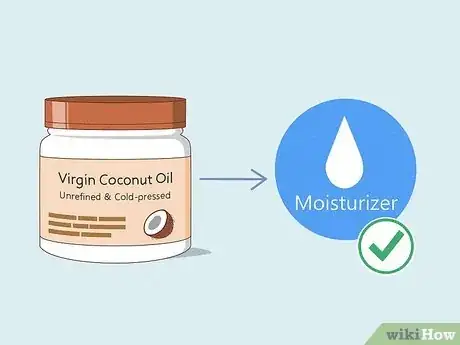
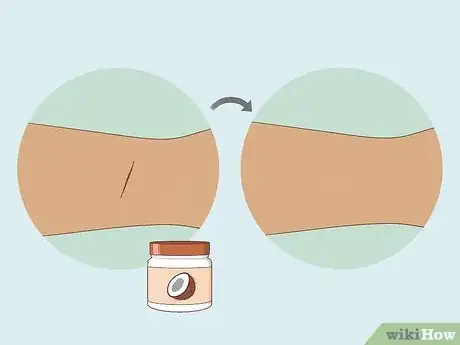
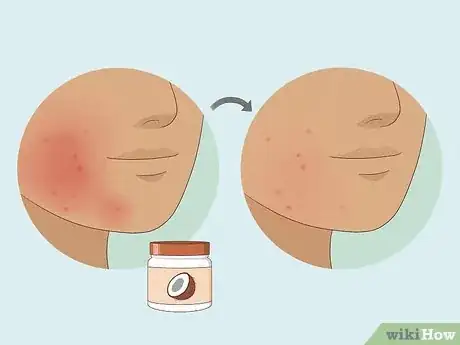
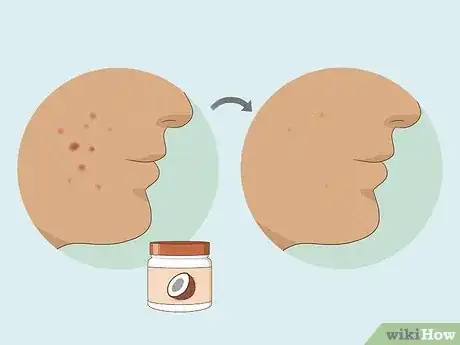
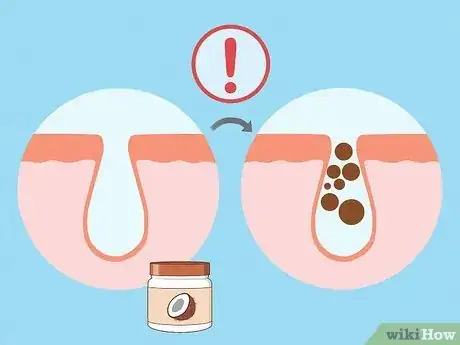


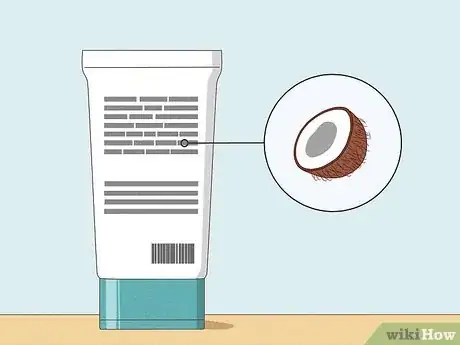





-Step-8-Version-2.webp)




















































